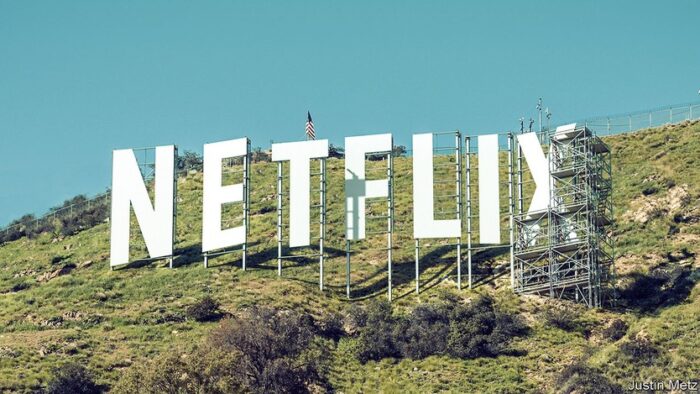อ่านบทวิเคราะห์ของ The Verge เรื่องสถานการณ์ของ Netflix ในยุคสมัยที่วงการสตรีมมิ่งแข่งขันกันอย่างรุนแรง ทำให้จุดแตกต่างของ Netflix ที่เคยได้เปรียบชาวบ้านในอดีต คือมีพลังเทคโนโลยีที่เหนือกว่า เริ่มหมดไปแล้ว
เมื่อทุกคนมีเทคโนโลยีพอๆ กัน สิ่งที่สร้างความแตกต่างได้คือ content ซึ่ง Netflix เสียเปรียบบริษัทที่มีคลัง content ในอดีตเป็นจำนวนมาก
ประเด็นที่ได้เพิ่มเติมคือ โมเดลการสร้างหนังของสตูดิโอในฮอลลีวู้ดนั้นต่างจาก Netflix เพราะค้นพบ (มานานแล้ว) ว่าหนังใหญ่ๆ ทำกำไรมากกว่า
The reason Hollywood moved away from the midrange films Netflix briefly made its bread and butter is because Hollywood found bigger and more consistent returns on huge blockbusters (usually involving some sort of superhero or an actor who plays a superhero in another franchise).
ในขณะที่ Netflix พยายามทำมาตลอดทศวรรษที่ผ่านมา คือ คิดแบบบริษัทเทคโนโลยี เน้นทำคอนเทนต์ให้เยอะกว่า หลากหลายกว่า จับตลาดคนให้กว้างกว่า เพื่อทำ analytical profile ของผู้ใช้งาน
Netflix, with its then near-endless source of cash and no need to please distributors or theaters, could afford to produce more varied content to try and secure people’s subscriptions every month. And it could further rationalize the heavy spending because it was trying to better understand audiences through meticulous analysis of viewer data that its competitors just didn’t have access to.
การต่อสู้ของ Netflix กับบริษัทหนังฮอลลีวู้ด จึงเป็นภาพสะท้อนของโมเดลหรือวิธีคิดที่แตกต่างกันด้วย ซึ่งล่าสุดดูเหมือนว่า โมเดลของ Netflix จะแพ้
Netflix was supposed to transform Hollywood. Instead, it’s turning to the same practices that made its competitors giants, only without the lucrative franchises, fandoms, and huge back catalogs those same competitors enjoy.
หากว่าโมเดลของ Netflix แพ้ สุดท้ายแล้ว Netflix ก็ต้องปรับตัวตาม “วิถีฮอลลีวู้ด” ซึ่งตัวอย่างที่ชัดเจนของบริษัทฮอลลีวู้ดต่างๆ (ที่ไม่ใช่ Disney) คือเลือกจะไม่แข่งกับ Disney ในตลาดแอนิมเชันและตลาดภาพยนตร์ครอบครัว
But the biggest way Netflix is now chasing the competition is in how it’s choosing what films to make.
You’ll note that two of those, animation and family live-action, are also areas where Netflix’s biggest competitor, Disney, does sterling business. It’s almost like Netflix is doing what many film companies have done before: stepping away from competing with the House of the Mouse in the areas it’s historically dominated.
หมายเหตุ: ระหว่างการค้นข้อมูลเขียนบล็อกนี้ พบบทความใน The Economist เมื่อปี 2018 (ยุคที่หุ้น FAANG ยังรุ่งเรือง) ถึงกับมองว่า Netflix เป็นโมเดลที่ฮอลลีวู้ดควรเอาเยี่ยงอย่างทีเดียว (เกือบทั้งหมดในบทความนี้ก็ล้าสมัยแล้ว)
- Scale Netflix now has more subscribers outside America than inside it. From Mexico to India people stream “Narcos” and “Stranger Things” in a planet-wide community of binge-watchers. –> ตอนนี้ขยายครบหมดโลกแล้ว ตันแล้ว
- Data It makes expert use of data, categorising individual users’ preferences into about 2,000 “taste clusters”, to serve up different shows to different users, including within the same family, via targeted recommendations. –> คนอื่นก็ไล่ตามทันแล้ว tech stack พอๆ กันทุกคน
- Business Model And unlike those two ad-based platforms, its subscription-based business model means that the firm does not rely on selling users’ data or attention to outsiders. Instead, it offers customers a simple exchange: a monthly fee in return for television they want to watch. –> ไม่จริงแล้ว เพราะกำลังจะเพิ่ม tier แบบมีโฆษณา
- Stock Price “If Jesus were a stock, he’d be Netflix,” one savvy investor is said to have observed. “You either believe or you don’t.” –> 😉 in 2022

/cdn.vox-cdn.com/uploads/chorus_asset/file/18956934/acastro_181101_1777_netflix_0002.jpg)
